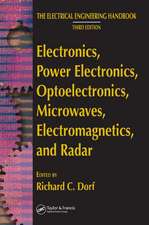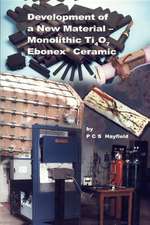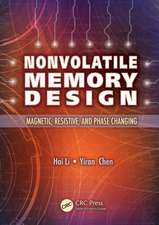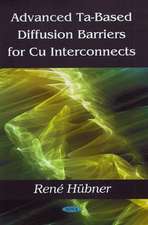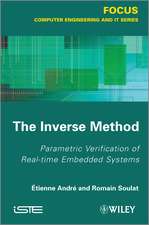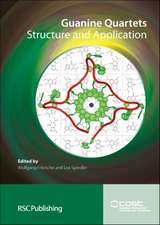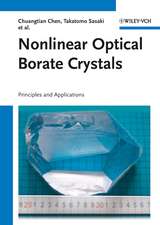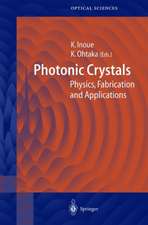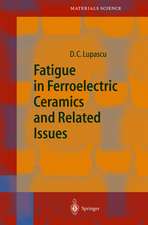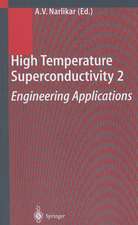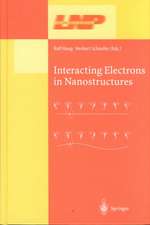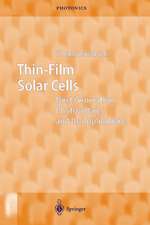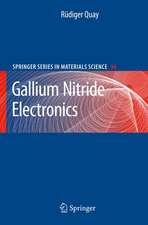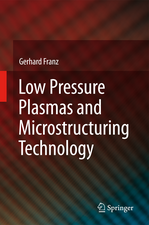Handbook of Photovoltaic Silicon
Editat de Deren Yangen Limba Engleză Hardback – 28 noi 2019
This work is divided into various areas including but not limited to fundamental principles, design methodologies, wafering techniques/fabrications, characterizations, applications, current research trends and challenges.
It offers the most updated and self-explanatory reference to all levels of students and acts as a quick reference to the experts from the fields of chemistry, material science, physics, chemical engineering, electrical engineering, solar energy, etc..
Preț: 4685.06 lei
Preț vechi: 5713.49 lei
-18% Nou
Puncte Express: 7028
Preț estimativ în valută:
896.46€ • 938.51$ • 741.78£
896.46€ • 938.51$ • 741.78£
Carte disponibilă
Livrare economică 15-29 martie
Preluare comenzi: 021 569.72.76
Specificații
ISBN-13: 9783662564714
ISBN-10: 3662564718
Pagini: 1200
Ilustrații: XVIII, 967 p. 578 illus., 393 illus. in color.
Dimensiuni: 155 x 235 mm
Greutate: 1.5 kg
Ediția:1st ed. 2019
Editura: Springer Berlin, Heidelberg
Colecția Springer
Locul publicării:Berlin, Heidelberg, Germany
ISBN-10: 3662564718
Pagini: 1200
Ilustrații: XVIII, 967 p. 578 illus., 393 illus. in color.
Dimensiuni: 155 x 235 mm
Greutate: 1.5 kg
Ediția:1st ed. 2019
Editura: Springer Berlin, Heidelberg
Colecția Springer
Locul publicării:Berlin, Heidelberg, Germany
Cuprins
Introduction.- Polycrystalline silicon.- Crystalline silicon growth.- Silicon wafer preparing.- Impurity and defect in crystalline silicon.- Thin film silicon.- Nano-structure silicon materials and solar cells.
Notă biografică
Prof. Dr. Deren Yang was born in 1964 in China. He is an academician of the Chinese Academy of Sciences and a Cheung Kong Professor at Zhejiang University in China. He is the dean of Faculty of Engineering at Zhejiang University. He is also the director of the State Key Lab of Silicon Materials and the director of Semiconductor Materials Institute at Zhejiang University. Dr. Yang received his bachelor’s degree in 1985 and his Ph.D. in 1991 from Zhejiang University and then worked there. He worked as a visiting researcher in Japan in 1993, in Germany from 1995 to 1997, and in Sweden in 1999. In 1997, he was promoted to be a full professor by Zhejiang University and then promoted to be the Cheung Kong Professor in 2000 by the Ministry of Education of China. Dr. Yang received the National Science Fund for Distinguished Young Scholars in China in 2002, won the Award of National Nature Science in 2005 and 2013, as well as the Award of Chinese Young Science and Technology in 2006. He got elected as an academician of the Chinese Academy of Sciences in 2017.
Dr. Yang has engaged in the research of silicon materials used for microelectronic devices, solar cells, and opto-electric and nano devices. He has authored/coauthored 14 books, including 6 books in English, and edited 6 proceedings of the international conference. He has published over 780 research papers in international peer-reviewed journals, such as Nature Communications, Advanced Materials, Nano Letters, Journal of the American Chemical Society, Applied Physics Letter, and Physics Review B, with the total number of over 14,200 citations by SCI cited papers published by other groups. His h index is 63. He also holds 152 Chinese patents. In the past, he chaired or co-chaired 18 international conferences/symposia and was appointed as the member of international committee of more than 50 international conferences. Dr. Yang also presented more than 53 invited talks in international conferences. He is the editor-in-chief of Superlattices and Microstructures and also the member of editorial advisory board of eight journals, including three international journals, such as Physica Status Solidi and Silicon. Dr. Yang is vice director of China Photovoltaic Association, member of Expert Team of Chinese Keystone Special Projects, member of Board of Chinese Renewable Energy Association, member of Board of Chinese Crystal Association, member of SEMI China PV Committee, and chief scientist of a national key project for basic research of China.
Dr. Yang has engaged in the research of silicon materials used for microelectronic devices, solar cells, and opto-electric and nano devices. He has authored/coauthored 14 books, including 6 books in English, and edited 6 proceedings of the international conference. He has published over 780 research papers in international peer-reviewed journals, such as Nature Communications, Advanced Materials, Nano Letters, Journal of the American Chemical Society, Applied Physics Letter, and Physics Review B, with the total number of over 14,200 citations by SCI cited papers published by other groups. His h index is 63. He also holds 152 Chinese patents. In the past, he chaired or co-chaired 18 international conferences/symposia and was appointed as the member of international committee of more than 50 international conferences. Dr. Yang also presented more than 53 invited talks in international conferences. He is the editor-in-chief of Superlattices and Microstructures and also the member of editorial advisory board of eight journals, including three international journals, such as Physica Status Solidi and Silicon. Dr. Yang is vice director of China Photovoltaic Association, member of Expert Team of Chinese Keystone Special Projects, member of Board of Chinese Renewable Energy Association, member of Board of Chinese Crystal Association, member of SEMI China PV Committee, and chief scientist of a national key project for basic research of China.
Textul de pe ultima copertă
The utilization of sun light is one of the hottest topics in sustainable energy research. To efficiently convert sun power into a reliable energy – electricity – for consumption and storage, silicon and its derivatives have been widely studied and applied in solar cell systems. This handbook covers the photovoltaics of silicon materials and devices, providing a comprehensive summary of the state of the art of photovoltaic silicon sciences and technologies.
This work is divided into various areas including but not limited to fundamental principles, design methodologies, wafering techniques/fabrications, characterizations, applications, current research trends and challenges.
It offers the most updated and self-explanatory reference to all levels of students and acts as a quick reference to the experts from the fields of chemistry, material science, physics, chemical engineering, electrical engineering, solar energy, etc..
This work is divided into various areas including but not limited to fundamental principles, design methodologies, wafering techniques/fabrications, characterizations, applications, current research trends and challenges.
It offers the most updated and self-explanatory reference to all levels of students and acts as a quick reference to the experts from the fields of chemistry, material science, physics, chemical engineering, electrical engineering, solar energy, etc..
Caracteristici
Provide the most comprehensive, authoritative and updated reference on photovoltaic silicon from material fabrication, physical structures, processing techniques, to real life applications Each chapter is self-contained and accessible to newcomers Each chapter is contributed by world class scholars and industrial experts Under Springer Reference dynamic update publication model with continuous online update Includes supplementary material: sn.pub/extras


